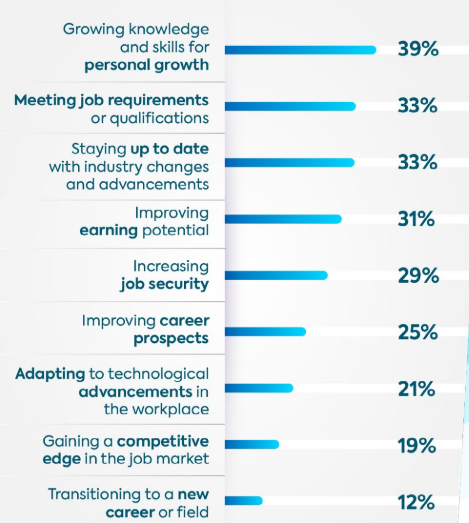
While level of satisfaction when it comes to training opportunities is high, that has dropped since 2020, finds report

Employees are feeling the need to update their skills amid the changing landscape of work, according to a recent report.
Overall, 71% of workers would like to update their skills more often, and 80% believe employers should invest more to provide upskilling and reskilling opportunities for workers, reports TalentLMS.
That is because 37% of workers are concerned that their skills may be obsolete, and 33% want upgraded skills to meet job requirements or qualifications.
“Forward-thinking employers” are taking steps to address these worker needs, says Meghan M. Biro, founder and CEO at TalentCulture.
“Change is a fact of business life. Yet these days, everything seems to be moving faster than ever. Experts now say the typical skill becomes obsolete in five years or less. Meanwhile, innovation keeps disrupting the status quo. But if your organization can’t predict which skills will matter down the road, how can you prepare?
“It’s not easy. That’s why forward-thinking employers don’t lean on hiring, alone, to fulfill all their talent needs. In addition, they invest in workforce development to build diverse skills from within.”
Nearly two-thirds (64%) of workers globally believe that businesses should upskill and train employees for roles across the company before hiring externally, according to a previous LHH report.
Nearly four in five (78%) employees are motivated to complete work-related training, according to TalentLMS’s survey of 1,000 workers in the U.S.
Also, 77% say learning new skills gives them a sense of purpose.

Source: TalentLMS
And it seems employers are doing a good job on the learning and development end.
Over a quarter (27%) of employees are very satisfied and 44% are somewhat satisfied with their employer’s upskilling and reskilling initiatives. Also, 24% are very satisfied and 40% are somewhat satisfied with the variety of offered skills in these initiatives.
Almost all employees using generative AI tools still want to be trained on using them, according to a previous report.
However, while workers’ general satisfaction with upskilling and reskilling training is at 71%, it has dropped from 78% in 2020, according to TalentLMS.
Here are some tactics to improve skill development initiatives in your organization, according to TalentLMS:
Energage, an HR technology provider, also shared – Top Workplaces – that feedback is important for developing training initiatives.
“Feedback is a critical part of effective training and development strategies,” it says. “Asking employees about their experience and the effectiveness of programs offers helpful insight for improvements and can also inform new training initiatives.”
Three in four employers are worried that they can’t train employees fast enough to keep up with new technologies, according to a previous report.